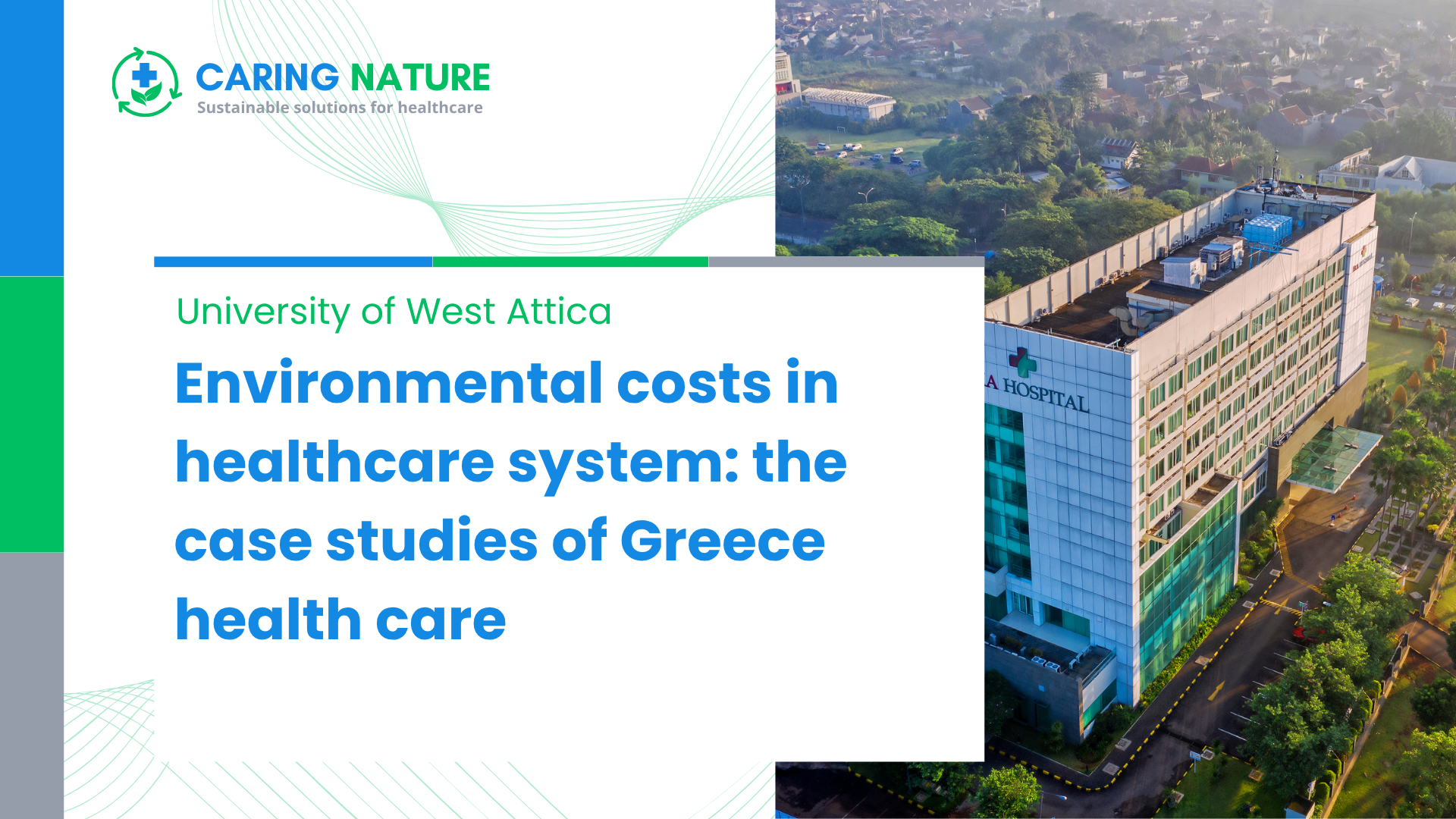The CARING NATURE project is proud to announce the insightful article published by our partners Anastasios Sepetis and Fotios Rizos from the University of West Attica, Greece, entitled “Environmental costs in healthcare system: the case studies of Greece health care”.
In this study, our partners highlight the environmental impact of the health sector, which contributes approximately 4.6% of global greenhouse gas emissions. Although healthcare’s primary mission is to protect and restore human health, its environmental impcat undermines public health itself, as climate change is a major and growing driver of disease and health burdens worldwide.
Focusing on public hospitals in Greece, the study investigates how environmental costs—such as energy, water, and waste management—affect total operating costs and what hospital characteristics influence these costs. Using data from the Greek Ministry of Health and linear regression models, the research aims to inform strategies for more sustainable and efficient healthcare systems, contributing to the global discussion on health sector decarbonization.
What are the main conclusions of the study ?
-
Environmental costs are significant and vary by hospital characteristics: Hospitals’ environmental costs—linked to energy, water, and waste—are significantly influenced by factors such as hospital type (e.g. university or specialized), size (number of beds), presence of intensive care units, use of gas for heating, and staff numbers.
-
Our partners developed a predictive model for the Healthcare Sector Environmental Footprint (HCAEF), offering a practical tool for hospital managers to monitor and reduce environmental impact while improving operational efficiency.
-
The study reveals inefficiencies in waste management, including poor categorization and excessive use of ‘contaminated waste’ bags, pointing to areas needing urgent improvement.
-
Water and energy usage varies significantly across Greek hospitals, influenced by size and access to renewable energy, underlining the importance of local conditions in sustainability planning.
Read the full article here.






